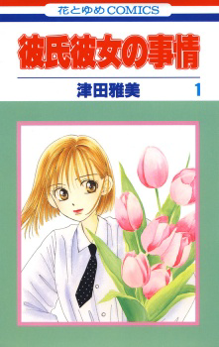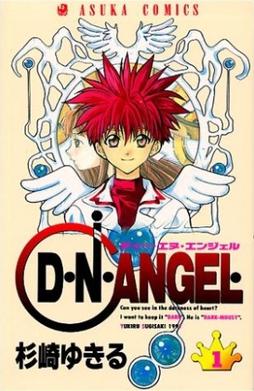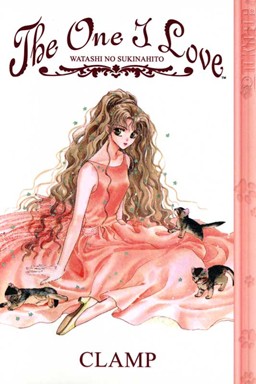Related Research Articles

Marmalade Boy is a Japanese manga series written and illustrated by Wataru Yoshizumi. It was published in Shueisha's shōjo manga magazine Ribon from May 1992 to October 1995 and collected in eight tankōbon volumes. The series was adapted by Toei Animation as a 76-episode anime television series which aired on TV Asahi in 1994 to 1995. This was followed by a prequel theatrical anime movie in 1995. The series was also adapted as a 30-episode live-action television series that was broadcast in Taiwan in 2002. A live-action film adaptation was released in Japan by Warner Bros. Pictures on April 27, 2018.

Great Teacher Onizuka, officially abbreviated as GTO, is a Japanese manga series written and illustrated by Tooru Fujisawa. It was originally serialized in Kodansha's shōnen manga magazine Weekly Shōnen Magazine from January 1997 to February 2002, with its chapters collected in 25 tankōbon volumes. The story focuses on 22-year-old ex-bōsōzoku member Eikichi Onizuka, who becomes a teacher at a private middle school, Holy Forest Academy, in Tokyo, Japan. It is a continuation of Fujisawa's earlier manga series Shonan Junai Gumi and Bad Company, both of which focus on the life of Onizuka before becoming a teacher.

Kare Kano is a Japanese manga series written and illustrated by Masami Tsuda. It was serialized in LaLa from 1995 to 2005 and collected in 21 tankōbon volumes by Hakusensha. It depicts the romance between "perfect" student Yukino Miyazawa and her academic rival Soichiro Arima, and the relationships of several of their friends.

D.N.Angel is a Japanese manga series written and illustrated by Yukiru Sugisaki. The manga premiered in Japan in the Kadokawa Shoten shōjo magazine Monthly Asuka in November 1997. After two extended hiatuses the series concluded in 2021. Kadokawa Shoten has collected the individual chapters and published them in 15 tankōbon and 5 e-books. The manga series is licensed for English language release in North America and the United Kingdom by Tokyopop, which has released 13 volumes of the series as of 2011.

Tokyopop is an American distributor, licensor and publisher of anime, manga, manhwa and Western manga-style works. The German publishing division produces German translations of licensed Japanese properties and original English-language manga, as well as original German-language manga. Tokyopop's US publishing division publishes works in English. Tokyopop has its US headquarters near Los Angeles International Airport in Los Angeles, California. Its parent company's offices are in Tokyo, Japan and its sister company's office is in Hamburg, Germany.

.hack//Legend of the Twilight is a science fiction manga series written by Tatsuya Hamazaki and drawn by Rei Izumi. The twenty-two chapters of .hack//Legend of the Twilight appeared as a serial in the Japanese magazine Comptiq and published in three tankōbon by Kadokawa Shoten from July 2002 to April 2004. Set in a fictional MMORPG, The World, the series focuses on twins Rena and Shugo, who receive chibi avatars in the design of the legendary .hackers known as Kite and BlackRose. After Shugo is given the Twilight Bracelet by a mysterious girl, the two embark on a quest to find Aura and unravel the mystery of the Twilight Bracelet.

Rave Master, Rave, and alternatively, The Groove Adventure Rave in Japan, is a Japanese manga series written and illustrated by Hiro Mashima. The series follows Haru Glory, a teenager on a quest to find the five fragments of the sacred stone of light Rave in order to bring peace to the world by defeating the criminal group Demon Card. Mashima created this series with the idea of travelling around the world and was presented with difficulties in its serialization due to its considerable length.

Peace Maker Kurogane is a Japanese manga series written and illustrated by Nanae Chrono. It is unrelated to the Peace Maker manga by Ryōji Minagawa. The story begins in 19th century Japan before the Meiji Restoration, a chain of events that led to enormous changes in Japan's political and social structure while the seeds of the revolution are being planted. The story follows the boy protagonist, Tetsunosuke Ichimura, who joins the Shinsengumi while seeking strength to avenge his parents' death at the hands of a Chōshū rebel.

Animerica was a monthly magazine published by Viz Media containing news, feature articles, and reviews on manga, anime, and related media, as well as a section that serialized manga published by Viz. After an initial November 1992 preview issue, Animerica's first regular issue was released in February 1993 with a March 1993 cover date. In 1998, Animerica Extra was launched as a separate manga anthology magazine which eventually focused specifically on shōjo titles. It was canceled in 2004.

The One I Love is a romantic, slice-of-life shōjo manga by Clamp, an all-female, manga artist team consisting of Satsuki Igarashi, Mokona, Tsubaki Nekoi, and Nanase Ohkawa. Appearing as a monthly serial in the Japanese manga magazine Monthly Young Rose from December 1993 to June 1995, the twelve stories were collected into a bound volume by Kadokawa Shoten and published in July 1995. The One I Love contains twelve independent manga stories, each focusing on an aspect of love and accompanied by an essay. Ohkawa wrote the essays while Nekoi illustrated the manga; it was the first time she primarily illustrated a manga by Clamp. Some of the stories draw on the life experiences of the women while others take inspiration from conversations they had with friends.

Shojo Beat is a shōjo manga magazine formerly published in North America by Viz Media. Launched in June 2005 as a sister magazine for Shonen Jump, it featured serialized chapters from six manga series, as well as articles on Japanese culture, manga, anime, fashion and beauty. After its initial launch, Shojo Beat underwent two redesigns, becoming the first English anthology to use the cyan and magenta ink tones common to Japanese manga anthologies. Viz launched a related imprint of the same name for female-oriented manga, light novels and anime.

Shirahime-Syo: Snow Goddess Tales is a supernatural manga by Clamp, a creative team made up by Satsuki Igarashi, Nanase Ohkawa, Tsubaki Nekoi and Mokona. It consists of three short stories, framed by a man's encounter with the titular character in the snow. The character design of the title character originated in a postcard in the team's newsletters, and later appeared in a preview page in the March 1992 issue of Bar Pretty, when only the concept had been finalized. Completed on a "tight" schedule, the volume was published in June 1992 by Kobunsha, and re-released in August 2001 by Kadokawa Shoten.

Tsukuyomi: Moon Phase is a Japanese manga series by Keitarō Arima. The manga was serialized in the monthly manga magazine Comic Gum from March 2000 to March 27, 2008. The series spanned sixteen manga volumes that were published by Wani Books in Japan. The manga series was later adapted into a 25 episode anime television series by Shaft, and aired on TV Tokyo from October 5, 2004 to March 29, 2005. An additional OVA episode dubbed "Episode 26" was later released only on DVD on February 22, 2006. Moon Phase is about a young vampire girl named Hazuki and a Japanese freelance photographer Kouhei Morioka whom Hazuki attempts to make into her servant.
An original English-language manga or OEL manga is a comic book or graphic novel drawn in the style of manga and originally published in English. The term "international manga", as used by the Japanese Ministry of Foreign Affairs, encompasses all foreign comics which draw inspiration from the "form of presentation and expression" found in Japanese manga. This may also apply to manga-inspired comics made in other languages.

GetBackers is a Japanese manga series written by Yuya Aoki and illustrated by Rando Ayamine. It was serialized in Kodansha's shōnen manga magazine Weekly Shōnen Magazine from March 1999 to February 2007, with its chapters collected in 39 tankōbon volumes. The plot follows the "GetBackers", a group that retrieves anything that was lost. The team is primarily composed of Ban Mido, a man born with the illusionary technique "Evil Eye", and Ginji Amano the former leader of a gang called "The Volts", a powerful group in the dangerous territory called the Infinity Fortress in Shinjuku.

Chibi Vampire, originally released in Japan as Karin, is a Japanese manga series written and illustrated by Yuna Kagesaki. The story is about an unusual vampiress girl, who instead of drinking blood must inject it into others because she produces too much. Chibi Vampire first premiered in the shōnen magazine Monthly Dragon Age in the October 2003 issue, and ran until February 2008. The individual chapters were published by Kadokawa Shoten into fourteen collected volumes. Later an anime series for "Chibi Vampire" was also produced in 2005. This anime series has a somewhat similar but different story and ending.

Chobits is a Japanese manga series written and illustrated by the Japanese manga collective Clamp. It was serialized in Kodansha's seinen manga magazine Weekly Young Magazine from September 2000 to October 2002, with its chapters collected in eight bound volumes. Chobits was adapted as a 26-episode-long anime television series broadcast on TBS from April to September 2002. In addition, it has spawned two video games as well as various merchandise such as model figures, collectible cards, calendars, and artbooks.

Planet Ladder is a Japanese manga series written and illustrated by Yuri Narushima. Appearing as a serial in the shōjo manga magazine Crimson from the March 1998 issue to the May 2003 issue, the chapters of Planet Ladder were published by Sobisha/Shueisha in seven tankōbon volumes from December 1998 to May 2004. Based on the Japanese folktale The Tale of the Bamboo Cutter in which a girl is discovered to be the princess of the moon, the story focuses on a teenager named Kaguya, who is prophesied to save only one of the nine parallel worlds, and her quest to bring peace to a warring universe while finding her true identity.
References
- ↑ "More On Tokyopop Takuhai". Anime News Network. March 9, 2005. Retrieved March 12, 2013.
- 1 2 "Takuhai Changes to Manga Magazine". Anime News Network. October 7, 2005. Retrieved March 12, 2013.
- ↑ "'Takuhai' Becomes 'Manga Magazine'". ICv2. October 12, 2005. Retrieved March 12, 2013.